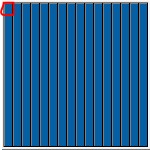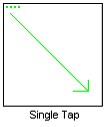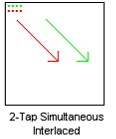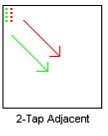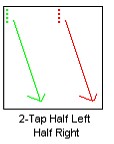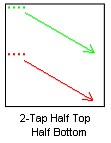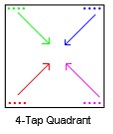From Saturday, Nov 23rd 7:00 PM CST - Sunday, Nov 24th 7:45 AM CST, ni.com will undergo system upgrades that may result in temporary service interruption.
We appreciate your patience as we improve our online experience.
From Saturday, Nov 23rd 7:00 PM CST - Sunday, Nov 24th 7:45 AM CST, ni.com will undergo system upgrades that may result in temporary service interruption.
We appreciate your patience as we improve our online experience.
To use the Camera link standard and obtain an image, you must first understand tap geometry. Tap geometry is the geometry the camera sensor uses to output data. This might be unique to each camera.
It is important to have this information to make sure you are using a compatible frame grabber that can interpret the data coming from the camera as well as a driver that can arrange the pixels to form an image.
TapGeometry: an enumerated type of parameter that summarizes the configuration that pixels are collected from a camera to build an image. A tap is defined as a pixel being transferred at each cycle of the pixel clock.
A tap geometry for area-scan camera is designated by: <TapGeometryX>-<TapGeometryY>
A tap geometry for line-scan or TDI-line-scan camera is designated by: <TapGeometryX>
TapGeometryX is designated by <RegionX>X<TapX>
TapGeometryY is designated by <RegionY>Y<TapY>
